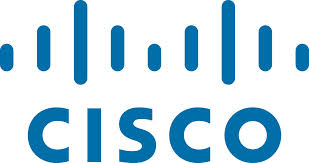Sunday, May 1, 2005
<strong>RLECs � What the <em>Other</em> 1,500 Carriers Are Doing With VoIP</strong>
It's been a long time since my last post, and I feel badly about that. Most of the week was tied up being on the road and preparing for the conference you're about to read about.
Last Thursday, I presented an overview of VoIP to an audience of RLECs and IOCs. This was part of the annual meeting of ANPI � Associated Network Partners Inc. � in Las Vegas. ANPI represents about 325 RLECs and IOCs, and is a good snapshot of what the roughly 1,500 operators in this space are doing with VoIP in the US.
The focus of the conference was on convergence and what it means for this market. These carriers typically have fewer than 10,000 subscribers, and many have less than 5,000. So, the economics are very different here, as are the needs of their subscribers. However, all these carriers are facing the same competitive pressures, and they were here to learn more about what VoIP can do for them.
ANPI is offering a practical solution and roadmap for VoIP. For most of these operators, VoIP is new, as are the competitive pressures they are seeing these days. They have limited means and capabilities to integrate VoIP in their networks. To address that, ANPI has developed a turnkey solution for members, branded as �No Boundaries�. This is a wholesale offering where they have put together all the pieces from various nextgen elements, including the media gateway, softphone, wireless access, OSS and QoS.
ANPI has partnered with vendors such as Versatel, myJabber, Brix Networks and WaveRider, all of whom are well positioned to meet the needs of this market. To support this as a facilities-based offering, No Boundaries would ride over ANPI�s core VoIP network, which is housed out of their co-location facility in Las Vegas.
Perhaps more importantly, they understand that they are a good fit for this market, and represent a realistic alternative to the legacy vendors many of these carriers have long been dealing with. Based on a show of hands from the audience � about 200 strong � about 60% are using Nortel switches. Otherwise, there was a smattering of Lucent and Siemens, and only a handful are using nextgen solutions.
I really think ANPI is on to something good here, and they are focused on educating their members about VoIP and why it�s important to their future. During conversations with members, my sense is that VoIP is still very novel to these operators, and they are facing more pressing concerns now, such as how to compete against wireless plans being offered now directly from carriers � as opposed the packages they�re authorized to resell. Or, how to compete against MSOs, who are starting to encroach their territory. Once the cablecos get in with video, voice won�t be far behind, and this is a real concern for ANPI members. Another big issue is the future of RUS subsidies, which are essential to the financial viability of many IOCs.
All these issues are real and daunting. Hopefully ANPI members are now starting to see how VoIP can give them the tools to compete, and this was the subject of my presentation. I certainly applaud ANPI�s efforts to educate their members, and utilize their strength in numbers as an economical way to give members a roadmap for VoIP, as well as providing the technical and marketing support resources that members will need.
Here's a grainy photo of me during my presentation...
View image
Last Thursday, I presented an overview of VoIP to an audience of RLECs and IOCs. This was part of the annual meeting of ANPI � Associated Network Partners Inc. � in Las Vegas. ANPI represents about 325 RLECs and IOCs, and is a good snapshot of what the roughly 1,500 operators in this space are doing with VoIP in the US.
The focus of the conference was on convergence and what it means for this market. These carriers typically have fewer than 10,000 subscribers, and many have less than 5,000. So, the economics are very different here, as are the needs of their subscribers. However, all these carriers are facing the same competitive pressures, and they were here to learn more about what VoIP can do for them.
ANPI is offering a practical solution and roadmap for VoIP. For most of these operators, VoIP is new, as are the competitive pressures they are seeing these days. They have limited means and capabilities to integrate VoIP in their networks. To address that, ANPI has developed a turnkey solution for members, branded as �No Boundaries�. This is a wholesale offering where they have put together all the pieces from various nextgen elements, including the media gateway, softphone, wireless access, OSS and QoS.
ANPI has partnered with vendors such as Versatel, myJabber, Brix Networks and WaveRider, all of whom are well positioned to meet the needs of this market. To support this as a facilities-based offering, No Boundaries would ride over ANPI�s core VoIP network, which is housed out of their co-location facility in Las Vegas.
Perhaps more importantly, they understand that they are a good fit for this market, and represent a realistic alternative to the legacy vendors many of these carriers have long been dealing with. Based on a show of hands from the audience � about 200 strong � about 60% are using Nortel switches. Otherwise, there was a smattering of Lucent and Siemens, and only a handful are using nextgen solutions.
I really think ANPI is on to something good here, and they are focused on educating their members about VoIP and why it�s important to their future. During conversations with members, my sense is that VoIP is still very novel to these operators, and they are facing more pressing concerns now, such as how to compete against wireless plans being offered now directly from carriers � as opposed the packages they�re authorized to resell. Or, how to compete against MSOs, who are starting to encroach their territory. Once the cablecos get in with video, voice won�t be far behind, and this is a real concern for ANPI members. Another big issue is the future of RUS subsidies, which are essential to the financial viability of many IOCs.
All these issues are real and daunting. Hopefully ANPI members are now starting to see how VoIP can give them the tools to compete, and this was the subject of my presentation. I certainly applaud ANPI�s efforts to educate their members, and utilize their strength in numbers as an economical way to give members a roadmap for VoIP, as well as providing the technical and marketing support resources that members will need.
Here's a grainy photo of me during my presentation...
View image
Subscribe to:
Post Comments (Atom)











No comments:
Post a Comment